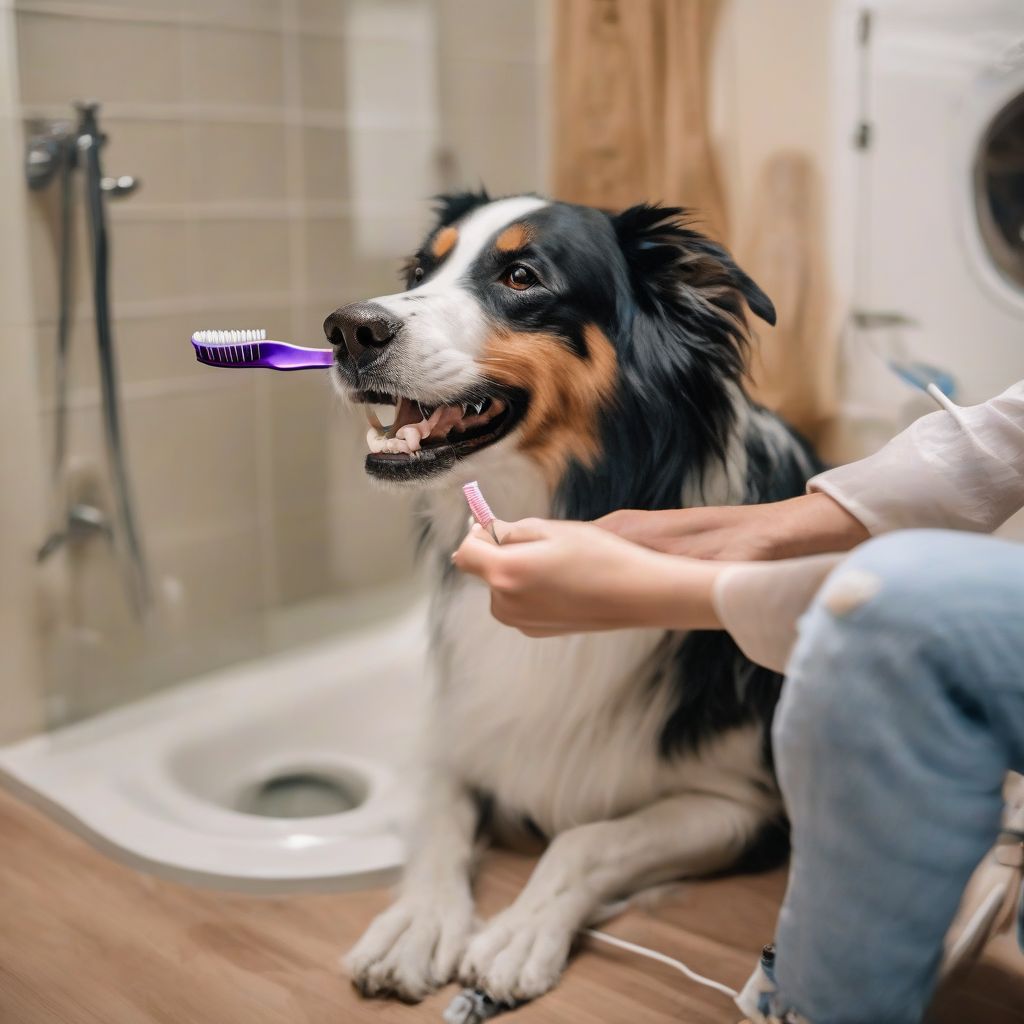As a certified nutritionist and meal planning coach, I’m deeply passionate about busting food myths – whether for humans or our furry friends! It always surprises me how misinformation about pet health can spread so easily. Just like with human nutrition, there are countless myths surrounding our pets’ well-being, and these misconceptions can sometimes lead to harmful practices. So, let’s dive in and debunk some of the most prevalent pet health myths, separating fact from fiction to ensure our beloved companions receive the best possible care.
Myth 1: A Wet Nose Means a Healthy Pet
We’ve all heard this one – a cold, wet nose signifies a healthy dog. While a wet nose is generally normal, it’s not a foolproof indicator of good health. A dog’s nose can fluctuate in temperature and moisture throughout the day, influenced by factors like sleep, activity, and even the weather.
Expert Insight:
“Relying solely on a wet nose to determine your dog’s health is like using a single puzzle piece to understand the whole picture,” says Dr. Emily Parker, a veterinarian with over 15 years of experience. “A variety of factors contribute to a dog’s overall well-being, and a physical examination by a veterinarian is crucial for accurate assessment.”
Instead of relying on nose moisture, pay close attention to other signs of well-being in your pet, such as appetite, energy levels, and bathroom habits. If you notice any drastic or concerning changes, it’s always best to consult your veterinarian.
 Close-up of a dog's nose
Close-up of a dog's nose
Myth 2: Garlic and Onions Are Natural Flea Repellents
While garlic and onions might add flavor to our dishes, they can be toxic to our feline and canine companions. These ingredients contain compounds that can damage red blood cells, potentially leading to anemia in pets.
Did you know?
Cases of garlic or onion toxicity in pets often result from well-intentioned owners adding these ingredients to homemade pet food.
Instead of relying on potentially harmful home remedies, opt for safe and effective flea and tick prevention methods recommended by your veterinarian. These may include oral or topical medications, special collars, or shampoos.
Myth 3: Pets Don’t Need Dental Care
Just like humans, pets need regular dental care to maintain healthy teeth and gums. Neglecting your pet’s oral hygiene can lead to various dental problems, including bad breath, plaque buildup, gum disease, and even tooth loss.
Expert Tip:
“Regular brushing, along with professional dental cleanings, can significantly improve your pet’s oral health and overall well-being,” advises Dr. Sarah Jones, a board-certified veterinary dentist.
Start brushing your pet’s teeth early on, ideally when they’re puppies or kittens, to get them accustomed to the routine. Dental chews and toys can also help promote good oral hygiene.
 A dog getting its teeth brushed by its owner
A dog getting its teeth brushed by its owner
[amazon bestseller=”dog toothbrush”]
Myth 4: A Little Bit of Chocolate Won’t Hurt
While a tiny nibble of dark chocolate might not harm a large dog, it’s best to err on the side of caution and keep all types of chocolate out of your pet’s reach. Chocolate contains a compound called theobromine, which dogs and cats metabolize much more slowly than humans.
The Danger of Theobromine:
Theobromine can cause various symptoms in pets, ranging from vomiting and diarrhea to increased thirst and urination, hyperactivity, tremors, seizures, and even death in severe cases.
The darker the chocolate, the higher the theobromine concentration, making dark chocolate and baking chocolate particularly dangerous for pets. Keep all chocolate treats safely stored away and be mindful of sharing sweet treats around your furry friends.
Myth 5: Indoor Cats Can’t Get Fleas
Don’t let the “indoor only” label fool you – even indoor cats can fall victim to fleas. These pesky parasites can hitch a ride on clothing, other pets, or even find their way into your home through tiny cracks and crevices.
Protecting Your Indoor Cat:
It’s essential to maintain consistent flea and tick prevention for all your pets, regardless of their indoor or outdoor status. Talk to your veterinarian about the best preventative options for your cat’s lifestyle and risk factors.
 A playful indoor cat batting at a toy
A playful indoor cat batting at a toy
Myth 6: Vaccines Cause Autism in Pets
This myth, while debunked countless times in human medicine, has unfortunately found its way into pet care. There is absolutely no scientific evidence to support the claim that vaccines cause autism in pets.
The Importance of Vaccinations:
Vaccinations are crucial for protecting your pets from potentially deadly diseases. They work by introducing a harmless version of a virus or bacteria, stimulating the immune system to develop antibodies and build immunity.
It’s always best to consult your veterinarian to determine the appropriate vaccination schedule for your pet based on their age, lifestyle, and risk factors.
Myth 7: You Can Tell a Pet’s Age By Their Teeth
While a pet’s teeth can provide some indication of their age, it’s not an entirely accurate method. Just like humans, pets can experience varying degrees of dental wear and tear influenced by factors such as diet, chewing habits, and genetics.
Expert Opinion:
“While examining a pet’s teeth can offer clues about their age range, relying solely on dental appearance for age determination can be misleading,” says Dr. Mark Thompson, a veterinary dental specialist. “Other factors, such as overall health, breed, and size, also play a role in a pet’s aging process.”
If you need to know your pet’s exact age, especially if you’ve adopted them, checking their medical records or consulting a veterinarian is the most reliable approach.
Myth 8: All Fat Is Bad for Pets
Just like with human nutrition, not all fats are created equal. While it’s true that excessive fat intake can contribute to obesity and other health problems in pets, healthy fats are essential for their overall well-being.
The Benefits of Healthy Fats:
Healthy fats, such as omega-3 and omega-6 fatty acids, provide numerous benefits for pets, including supporting skin and coat health, aiding cognitive function, and reducing inflammation.
When choosing pet food, look for options that list healthy fats as ingredients, such as fish oil, flaxseed oil, or chicken fat.
Myth 9: Raw Food Diets Are Best for Pets
While proponents of raw food diets tout their benefits, there’s no conclusive evidence suggesting that raw feeding is superior to commercially prepared, nutritionally balanced pet food.
Potential Risks of Raw Feeding:
Raw food diets can pose potential risks to both pets and humans, as raw meat and eggs can contain harmful bacteria like Salmonella and E. coli.
If you’re considering a raw food diet for your pet, it’s crucial to discuss the potential risks and benefits with your veterinarian and ensure you’re sourcing ingredients from reputable suppliers and handling the food safely to minimize contamination risks.
Conclusion: Prioritizing Your Pet’s Health with Accurate Information
As loving pet owners, we want to provide our furry companions with the best possible care. By debunking common pet health myths and relying on evidence-based information from reputable sources, we can make informed decisions that promote our pets’ health and happiness. Remember, your veterinarian is your trusted partner in pet care – don’t hesitate to reach out with any questions or concerns about your furry friend’s well-being.
